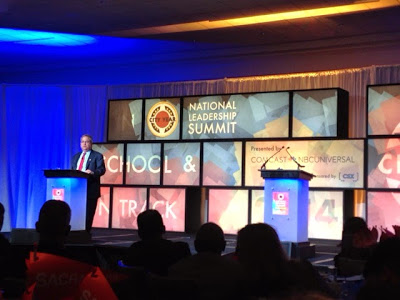Social Sciences

- 4th Annual National Conference For Principals And Child Care Directors: What Really Works? Impact And Innovation For Young Learners
4th Annual National Conference for Principals and Child Care Directors: What Really Works? Impact and Innovation for Young Learners 15 July 2012 Baltimore, United States Leaders in early education are invited to attend this dynamic conference that will...
- Youthactionnet Global Fellowship Program
YouthActionNet Global Fellowship ProgramEach year, 20 exceptional young social entrepreneurs are selected as YouthActionNet Global Fellows following a competitive application process. The year-long Fellowship program includes a seven-day leadership retreat...
- Jobs @amnesty International
Amnesty International Programme Director - International Mobilization Salary: £Competitive Location: Global South For the past 50 years Amnesty International (AI) has brought people together to fight for human rights. We've lobbied, protested...
- Conference
National At-Risk Education Network 7th Annual National Conference 16 to 18 February 2010 PANAMA CITY BEACH, FL - Edgewater Beach Resort NAREN's 7th annual conference at Edgewater Beach Resort, Panama City Beach, Florida. A high- powered specialized,...
- Emerging Issues Prize For Innovation: Opportunities For Undergraduate Projects
This is from Lesley Boney, by way of the Institute for Emerging Issues (IEI), and is a great opportunity for our bright, highly motivated students! Note that the ideas they received spanned a very wide range of disciplines!-----------------------------------------------------------...
Social Sciences
Positive social change

The City Year national leadership conference is taking place in Boston this week, celebrating the 25th anniversary of City Year. CY is a strong example of a social-change organization that is in the process of actually making an impact on a key social problem.
CY's goal is specific and audacious: to improve the high school graduation rate in the nation's poorest-performing schools. And it works on the basis of a data-driven plan of work: to place teams of corps members in challenged schools to provide near-peer support for at-risk children. There is good statistical evidence showing that this system works. The strongest implementation of this theory is a program called Diplomas Now (link).
City Year is an organization that is focused on the situation of low-income students and families. And in America this means that CY is also focused on addressing racial inequalities in our country. It is an organization that does a great job of embodying a philosophy and practice of multi-racial inclusiveness, both in the corps and in the organization. The icons of the organization are MLK, Gandhi, Mandela, and John and Robert Kennedy. (I was happy to see a great photo of Malcolm X and MLK in CEO Michael Brown's office in Boston.)
The young people who give a year or more in service are profoundly inspiring when you meet them: multi-racial, multi-class, and all committed to a unique kind of practical idealism. They express a wonderful empathy and connection with the children and young people whom they serve in some of our country's most disadvantaged schools. They live out the CY motto: "Give a year, change the world!"
Two things are unique about the City Year movement. One is its organizational structure. It is a national organization with a highly professional staff in Boston. The national organization provides the research capacity and strategic planning that the organization pursues throughout the country. And there are 25 cities in the US, as well as sites in South Africa and the UK, that have their own local staffs and committed site boards. This structure permits a great combination of national strategy and local adaptation and resource gathering that permits strong impact throughout the country.
The other distinctive feature of the City Year movement is the sharp focus the leaders of City Year have placed on impact. It is not enough to mobilize several thousand young people in a year of service; it is crucial that their efforts should pay off in terms of important social outcomes. This focus on measurable impact has increased dramatically in the past 15 years. The organization has shifted from the development of the young people in the corps, to measurable improvement in raising the high school graduation rate in the country's most challenged schools. This results-oriented leadership and focus helps the organization move forward in impact and scope every year.
So congratulations, Michael Brown and all the leaders and founders of this remarkable organization. Twenty-five years on and City Year is well on its way to closing the gap in opportunity and hope for urban young people throughout the United States.
- 4th Annual National Conference For Principals And Child Care Directors: What Really Works? Impact And Innovation For Young Learners
4th Annual National Conference for Principals and Child Care Directors: What Really Works? Impact and Innovation for Young Learners 15 July 2012 Baltimore, United States Leaders in early education are invited to attend this dynamic conference that will...
- Youthactionnet Global Fellowship Program
YouthActionNet Global Fellowship ProgramEach year, 20 exceptional young social entrepreneurs are selected as YouthActionNet Global Fellows following a competitive application process. The year-long Fellowship program includes a seven-day leadership retreat...
- Jobs @amnesty International
Amnesty International Programme Director - International Mobilization Salary: £Competitive Location: Global South For the past 50 years Amnesty International (AI) has brought people together to fight for human rights. We've lobbied, protested...
- Conference
National At-Risk Education Network 7th Annual National Conference 16 to 18 February 2010 PANAMA CITY BEACH, FL - Edgewater Beach Resort NAREN's 7th annual conference at Edgewater Beach Resort, Panama City Beach, Florida. A high- powered specialized,...
- Emerging Issues Prize For Innovation: Opportunities For Undergraduate Projects
This is from Lesley Boney, by way of the Institute for Emerging Issues (IEI), and is a great opportunity for our bright, highly motivated students! Note that the ideas they received spanned a very wide range of disciplines!-----------------------------------------------------------...
